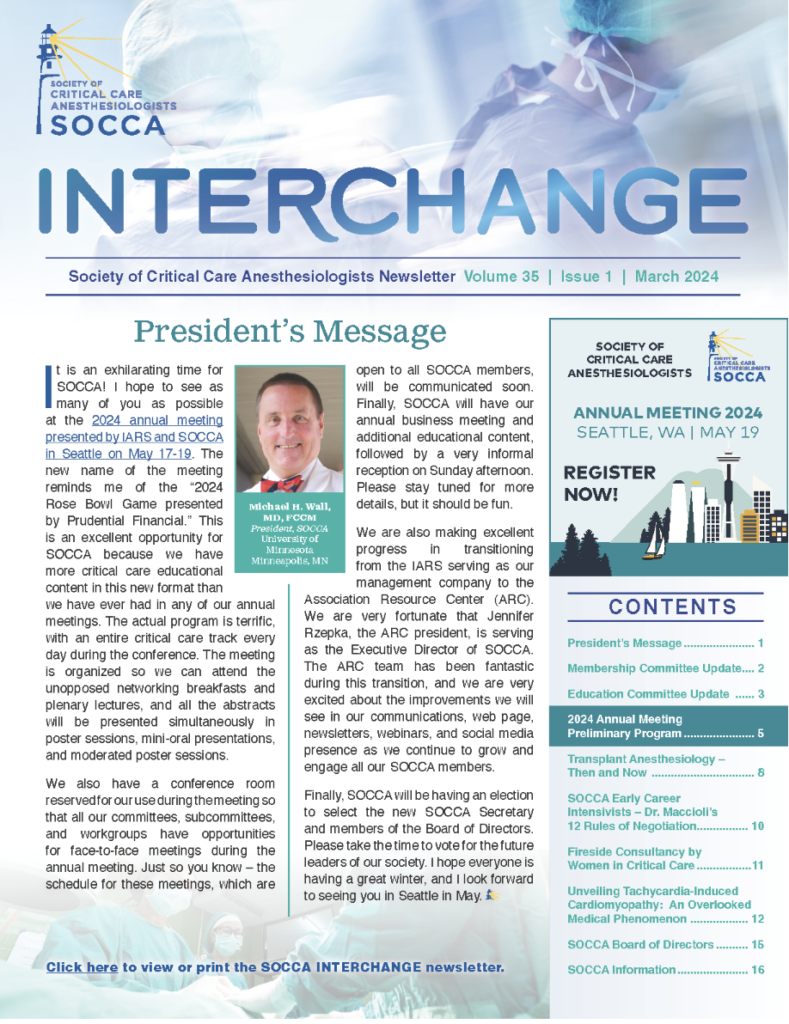End of the Ice Age: Changes in Temperature Management Post Cardiac Arrest
Out of hospital cardiac arrest is a highly morbid and clinically challenging public health issue. The concept of hypothermia as a means for neuroprotection in out of hospital cardiac arrest was first introduced in rat models but wasn’t investigated in human randomized controlled trials until the HACA and Bernard trials in 2002.1-3 Although limited by small sample sizes, these trials found therapeutic hypothermia for 12 or 24 hours to be associated with improved neurologic outcome after cardiac arrest. Despite their limitations, these trials significantly affected practice management in cardiac arrest, to the extent that induced hypothermia was advocated by the American Heart Association Guidelines in 2010.4
In 2013 the much larger, multicenter, randomized and single blinded Targeted Temperature Management (TTM) trial compared outcomes between targeting 33 degrees Celsius and 36 degrees in 950 unconscious patients who suffered out of hospital cardiac arrest.5 Each group underwent 28 hours of targeted temperature management followed by gradual rewarming and avoidance of fever for 72 hours. No difference in all-cause mortality was found in patients from either group at a mean follow up of 256 days. Furthermore, no difference was found in the secondary outcome of neurologic status. This was groundbreaking, because the complications of more profound hypothermia could be avoided while still reaping the neurological benefits of targeted cooling. It’s worth noting that, although the TTM trial focused on out of hospital cardiac arrest, the rates of bystander CPR were extremely high, and median time to basic life support was only one minute. These encouraging results led to even more expert support, with the 2021 European Resuscitation Council guidelines recommending a target temperature of 32 to 36 degrees for 24 hours post arrest.
The Targeted Temperature Management 2 Trial (TTM2) sought to further clarify how the degree of hypothermia affects neurologic outcomes after cardiac arrest. This international, multicenter, randomized control trial studied unconscious patients with out of hospital cardiac arrest for presumed cardiac or unknown cause who subsequently had sustained ROSC. The primary outcome is all-cause mortality at 6 months. Patients were excluded if they were an unwitnessed cardiac arrest with asystole, hypothermic on admission, on ECMO before ROSC, pregnant, had an intracranial bleed, or had severe COPD on home oxygen. The study mandated that patients must be enrolled no later than 180 minutes after return of spontaneous circulation. Of the more than four thousand patients screened, 55% did meet inclusion criteria, and in the end 930 patients were in the hypothermia arm and 931 in the normothermia arm. There was no significant difference between age, sex, shockable rhythm, bystander CPR, shock on admission, time to ROSC, temperature on admission, lactate level and STEMI.
The hypothermia group studied a target temperature of 33 degrees Celsius with cooling achieved using either surface (70%) or intravascular devices (30%). A bladder temperature probe was used for continuous temperature monitoring in all patients. The rewarming phase began after 28 hours and was intentionally gradual with a 0.3 degree max increase each hour until hour 40.
The normothermia group only cooled patients who developed a temperature of 37.8 degrees Celsius or greater and targeted 37.5 degrees Celsius. Pharmacologic antipyretics were utilized prior to physical cooling. Again, a bladder temperature probe was used for continuous monitoring. Of the 46% of patients who needed to be physically cooled in this group, 69% used surface and 31% used an intravascular device.
Both groups had mandated sedation until the end of the 40-hour intervention period, with sedation medications detailed in the supplementary materials. After 96 hours, a blinded physician performed a neurological assessment, after which withdrawal of life sustaining treatments was allowed in the setting of poor neurologic prognosis.
The primary outcome was not significantly different between the groups, with 50% of the hypothermia and 48% of the normothermia having died at 6 months. Secondary outcomes of functional status and quality of life were also not significantly different between the groups. There was a significantly higher number of arrhythmias causing hemodynamic instability in the hypothermia group, but no difference in pneumonia, sepsis, bleeding, and skin complications related to cooling devices.
This randomized controlled trial’s strength lies in its size and in being as blinded as is feasible in the context of clinical intervention. The reality of ICU care is that we as clinicians have a lot of control over how aggressively to treat patients, goals of care conversations and withdrawal of care. Part of the innovative design of TTM was the timed neuro-prognostication performed by a blinded provider, in that study at 72 hours. This protocol was repeated in the TTM2 trial but on an extended timeline and likely removes bias regarding patients who may have ultimately lived but had care withdrawn early by family.
The elephant in the room is the lack of a “no treatment” group in either of the TTM trials. Overall survival of post cardiac arrest has improved over time to the current documented survival of the TTM trials’ 50%, but it’s unclear if this is from advances in critical care, delayed withdraw of care, or other factors. As hypothermia of either degree studied demonstrates no improvement, it certainly cannot be said that therapeutic hypothermia is playing a role in improved outcomes based on these RCT trials. Smaller studies have shown the detrimental effect of fever on post arrest outcomes, but no direct comparisons have been made between targeted normothermia and no temperature management on all-cause mortality.6,7
The second question that these trials leave us asking is, can the management of out of hospital cardiac arrest be extrapolated to in hospital arrest? Though in hospital arrests were not studied, both TTM and TTM2 trials had exceptionally high rates of bystander CPR, 73% and 78-82% depending on randomization respectively. The TTM2 trial does not specify median time until the start of bystander CPR, but as mentioned, the response time was incredibly fast in TTM. This gives me confidence as a provider of post arrest care that an in hospital cardiac arrest would have similar response times to the out of hospital arrests studied. Therefore, with no in hospital data on which to base my practice, I will manage in and out of hospital arrests with the same normothermic goal in mind pending new data.
The review published by Morrison that accompanied the study notes a “key takeaway” is targeted temperature management is a “crucial treatment strategy to improve outcomes.”8
The importance of understanding that targeted temperature management does not equal therapeutic hypothermia cannot be understated. Both large RCT trials have demonstrated no improvement in survival or functional outcome with therapeutic hypothermia. In fact, both studies point out the risk of unstable arrhythmias with hypothermia, leading one to question if hypothermia should be considered therapeutic at all. With these uncertainties, it is important to study no treatment versus targeted temperature management in the future. With this new data in mind, it is also worthwhile to reconsider the strong recommendations for hypothermia currently present in our published international guidelines and standards of care.
- Coimbra C, Wieloch T. Moderate hypothermia mitigates neuronal damage in the rat brain when initiated several hours following transient cerebral ischemia. Acta Neuropathol (Berl) 1994;87:325-331
- Hypothermia after Cardiac Arrest Study Group. Mild therapeutic hypothermia to improve the neurologic outcome after cardiac arrest. N Engl J Med. 2002 Feb 21;346(8):549-56. doi: 10.1056/NEJMoa012689. Erratum in: N Engl J Med 2002 May 30;346(22):1756. PMID: 11856793.
- Bernard SA, Gray TW, Buist MD, Jones BM, Silvester W, Gutteridge G, Smith K. Treatment of comatose survivors of out-of-hospital cardiac arrest with induced hypothermia. N Engl J Med. 2002; 346:557–563.
- Peberdy MA, Callaway CW, Neumar RW, et al. Post-cardiac arrest care: 2010 American Heart Association guidelines for cardiopulmonary resuscitation and emergency cardiovascular care. Circulation 2010;122:Suppl 3:S768-S786[Erratum, Circulation 2011;123(6):e237, 124(15):e403.]
- Nielsen N, Wetterslev J, Cronberg T, Erlinge D, et al. TTM Trial Investigators. Targeted temperature management at 33°C versus 36°C after cardiac arrest. N Engl J Med. 2013 Dec 5;369(23):2197-206. doi: 10.1056/NEJMoa1310519. Epub 2013 Nov 17. PMID: 24237006.
- Zeiner A, Holzer M, Sterz F, et al. Hyperthermia After Cardiac Arrest Is Associated With an Unfavorable Neurologic Outcome. Arch Intern Med. 2001;161(16):2007–2012.
- Gebhardt K, Guyette FX, Doshi AA, Callaway CW, Rittenberger JC; Post Cardiac Arrest Service. Prevalence and effect of fever on outcome following resuscitation from cardiac arrest. Resuscitation. 2013 Aug;84(8):1062-7.
- Morrison L, Thoma B. Translating Targeted Temperature Management Trials into Postarrest Care. N Engl J Med. 2021; 384:2344-2345




































